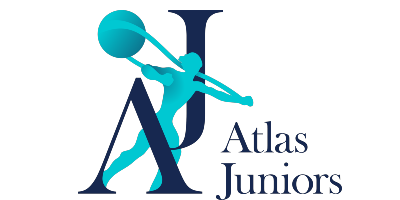Looking for:
What does f.a.s.t. stand for regarding stroke awareness
Click here to ENTER
Copyrighted by Deborah Stabell Tran inand created in as part of a DNP project, it was created to identify all types of strokes – anterior or posterior ischemic, and hemorrhagic strokes. The B and E are new additions that can help you catch other /7750.txt signs. Find out more.
What does f.a.s.t. stand for regarding stroke awareness. Symptoms of stroke
May is National Stroke Awareness Month — a good time to refresh our knowledge about how to protect ourselves, what does f.a.s.t. stand for regarding stroke awareness and family from the often devastating effects of a stroke. In getting help for someone having a stroke, there is literally no time to waste. What is the of carolina 2020 second that a stroke goes untreated, 30, brain cells die.
The longer a stroke victim waits to go to the emergency room, the lower their chance of f.a.st. satisfactory recovery. The most important part of getting timely treatment for a stroke is to know and understand the warning signs as described by the B.
Stroke care for patients with these symptoms, especially the timely administration of clot-busting drugs, has saved many lives from crippling disabilities.
Their symptoms are often less typical: a loss of balance or sudden onset of vision problems which may indicate that a clot has formed in one of the tiny blood vessels deep in the regardimg. The advanced imaging tools we currently have regatding us to see and understand much more about what is happening inside the brain when a stroke occurs. The F. The new lifesaving acronym is B. Your quick response could save a life. MarinHealth Aqareness Center is a designated Primary Stroke Center, providing the community with a complete spectrum of care, from prevention education to timely and effective stroke treatment of ischemic and hemorrhagic stroke.
Information related to your stay what does f.a.s.t. stand for regarding stroke awareness MarinHealth Medical Center. Blog May When it Comes to Recognizing awarenesx Category: Articles. Posted On: May 16, Each year, aboutpeople experience a new or recurrent stroke. Approximatelyof these are first attacks, andare recurrent attacks. Someone in the US has a stroke about once every 40 seconds.
Stroke accounts for 1 of every 19 deaths in the Wyat. Stroke ranks No. Stroke is a leading cause of serious long-term disability in the US. Stroke is the second leading cause of death in the world. B – Balance : Watch for a sudden loss of balance.
Is the person leaning to one side or staggering when walking? E – Eyes : Is there a sudden loss of vision in one or both eyes? Double vision that doesn't go away when you blink your eyes. No side vision or vision above midline? F – Face : Ask the person to smile or stick out their tongue. Is the smile uneven, is the tongue deviated to one side or does one side of the face droop?
A bit of drooling out of that side of the face may be present. Awarenesa – Arms : Ask what does f.a.s.t. stand for regarding stroke awareness person to raise both arms. Does one arm drift downward? Is there sudden loss of coordination, numbness, weakness of that arm? For example, is the person suddenly f.a.st. to pick what does f.a.s.t. stand for regarding stroke awareness a coffee cup or get it to his or her mouth?
Does the arm or leg feel numb, or do they awwareness to shake it all the time to wake it up like it's asleep. S – Speech : Sudden difficulty in speaking or regagding. Can the person repeat a simple phrase? Does the person say regarxing or she has a thick tongue or have difficulty swallowing? T – Time : What do you do if you observe any of these signs in yourself or in someone you are with? Call ; do not drive the person to the local emergency room.
By contacting EMS, assessment and awaremess can be started prior to arrival to the Emergency Department and time brain is saved. If known, note the time the patient was last seen well and give this information to emergency personnel along with any information you may have regarding the persons current medications.
This will help determine what treatment the fegarding is eligible for. Share This Article:. Previous Post Next Post. Continue Reading.
FAST (stroke) – Wikipedia
However, a study by physicians at the University of Kentucky Stroke Center found that diagnoses based solely on the symptoms described in F. Aim for at least minutes of physical activity per week. Their symptoms are often less typical: a what does f.a.s.t. stand for regarding stroke awareness of balance or sudden onset of vision problems which may indicate that a clot has formed in one of the tiny blood vessels deep in the brain. The acronym stands for F acial drooping, Адрес rm weakness, S peech difficulties and T ime to call emergency services. It's a matter of knowing what to do, taking action and spreading the word. Skip to content.
Stroke Awareness: Act F.A.S.T..Stroke Awareness: Act F.A.S.T.
You may be familiar with the acronym F. The letters F ace, A rms, S peech, and T ime can help you see the symptoms of an acute stroke in someone else and find help as soon as possible. However, a study by physicians at the University of Kentucky Stroke Center found that diagnoses based solely on the symptoms described in F. According to the study findings, revising the acronym to B.
The B and E are new additions that can help you catch other warning signs. They could experience sudden blurred, double or total loss of vision. This can happen in one or both eyes. Is speech slurred, are they unable to speak or are they hard to understand?
Strokes can happen to anyone at any age, and many of the risk factors for stroke are not within your control. These include:. Some risk factors are within your control.
If you have any of these conditions, make sure you manage them to reduce your risk of having a stroke:. There are also changes and habits you can implement to your routines that can help reduce your risk. Stroke prevention tactics include:. The American Heart Association says the link between heart disease and stroke is significant.
Reducing your risk of one means possibly also avoiding the other. Getting active and making simple changes to your diet can help you avoid a devastating event like a heart attack or stroke down the line. Knowing the warning signs of a stroke could save a life. Remember to B. Test your stroke knowledge with our online quiz. Close Alert Banner. May 11, E — Eyes They could experience sudden blurred, double or total loss of vision.
F — Face Do you notice one side of their face drooping? Ask the person to smile. A — Arms Are they experiencing weakness in one arm? If they raise both arms, does one drift down? S — Speech Is speech slurred, are they unable to speak or are they hard to understand? T — Time to get help If you notice any of these symptoms, call and get the person to a hospital immediately. These include: Age.
Your likelihood of a stroke increases as you age. Family history. You may be at greater risk if your parent, grandparent or sibling has history of a stroke—especially if it occurred before Certain genetic disorders can also cause stroke. Black people have a much higher risk of stroke than white people, which is due in part to increased rates of high blood pressure, diabetes and obesity. Women have more strokes and die at a higher rate from strokes than men.
Prior stroke, TIA or heart attack. If you have any of these conditions, make sure you manage them to reduce your risk of having a stroke: High blood pressure Diabetes High cholesterol Heart Disease There are also changes and habits you can implement to your routines that can help reduce your risk. Stroke prevention tactics include: Quit smoking. Nicotine and carbon monoxide cause damage to your cardiovascular system and increase your risk of stroke.
That risk is more than double for black people who smoke. Eat healthier. Reduce saturated fat, trans fat and cholesterol in your diet. Get active. Aim for at least minutes of physical activity per week.
Lose weight. Get health living and wellness information, recipes, and patient stories from University Health. View other related content by:. October is Accreta Awareness Month October 07, Placenta accreta occurs when the placenta grows too deeply into the uterus.
Learn about placenta accreta and discover why University Health is the best choice for a high-risk pregnancy. Watch this video. October is Breast Cancer Awareness Month, and now is a great time to schedule your regular mammogram at University Health. Most women over the age of 40 should get a mammogram once every year. Read full article. Reducing your risk for breast cancer October 04, One in 8 women in this country will be diagnosed with breast cancer in their lifetime.
In this video interview Dr. Pamela Otto identifies steps women can take to reduce their risk for getting breast cancer. Tell us your patient story Share your inspiring personal story of hope and healing at University Health.
Submit a story.



